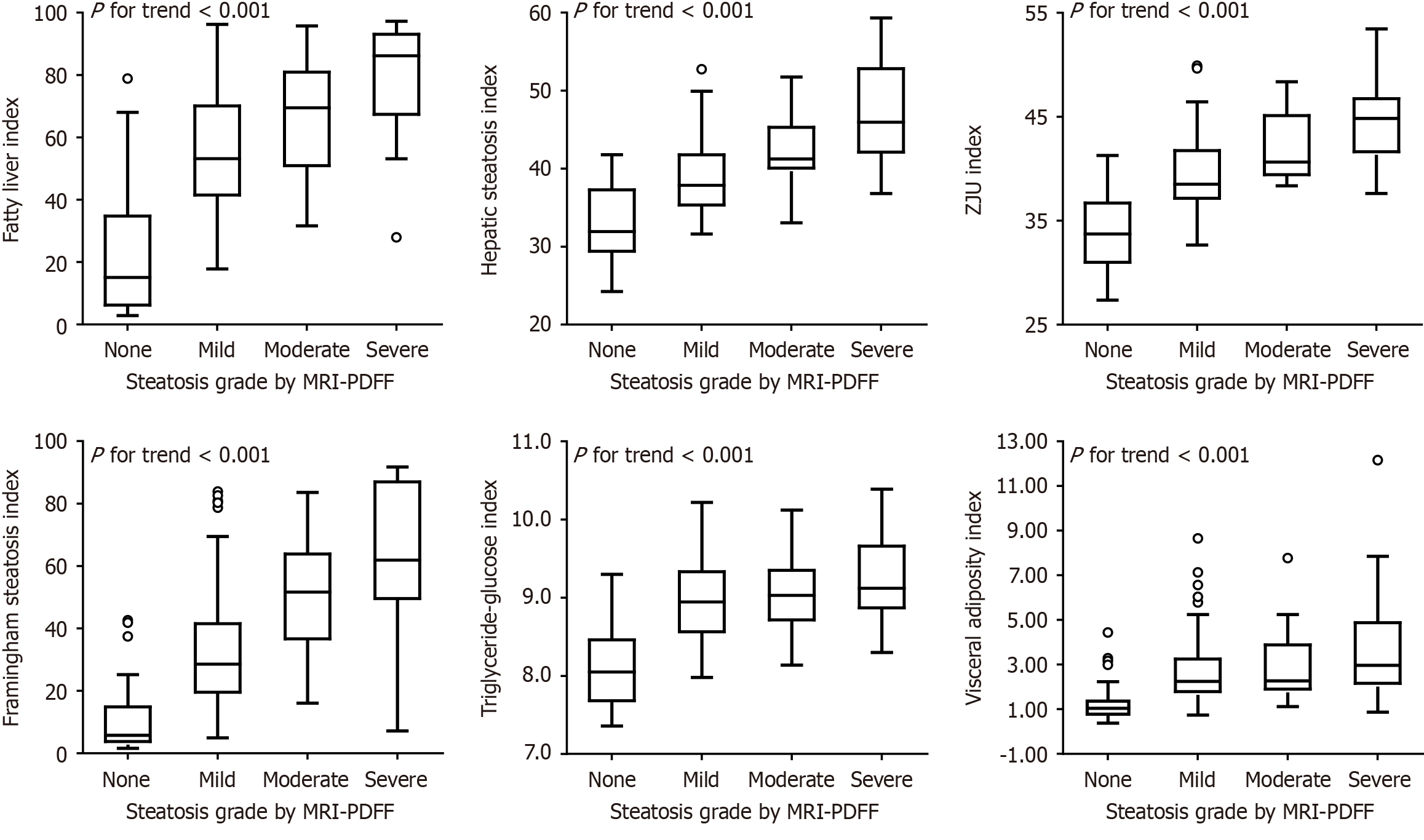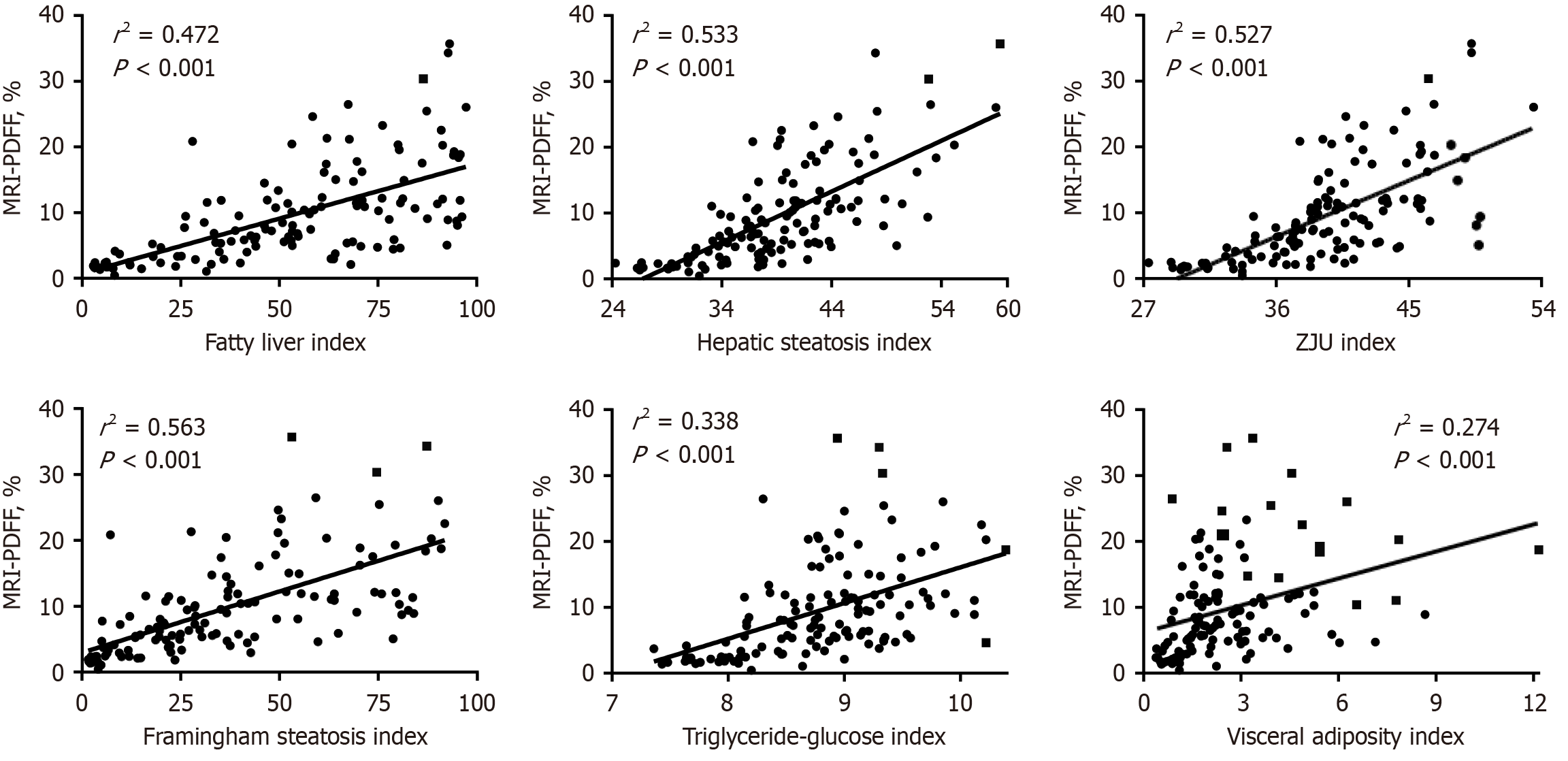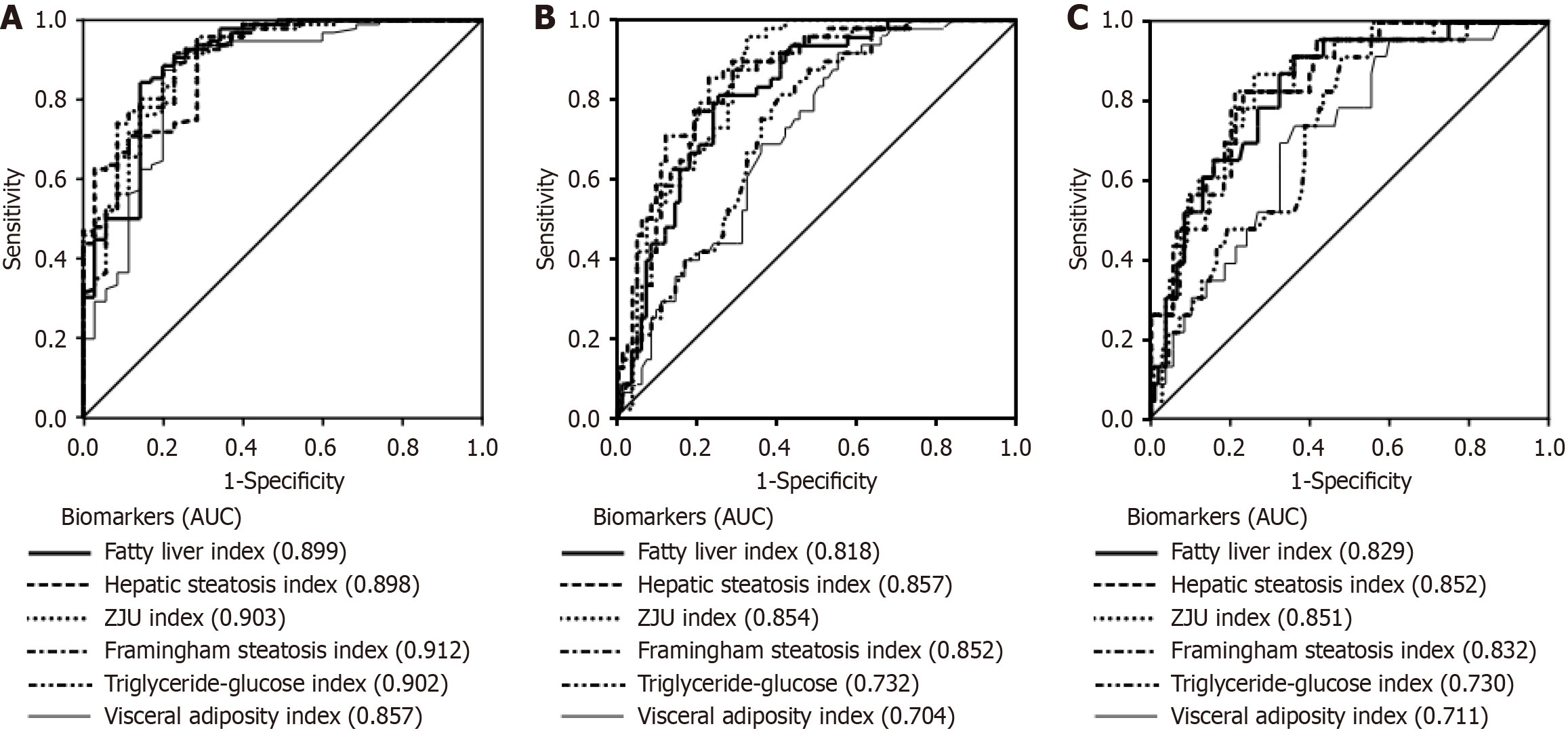Copyright
©The Author(s) 2025.
World J Radiol. May 28, 2025; 17(5): 104272
Published online May 28, 2025. doi: 10.4329/wjr.v17.i5.104272
Published online May 28, 2025. doi: 10.4329/wjr.v17.i5.104272
Figure 1 Examples of magnetic resonance imaging fat fraction maps for steatosis grade by proton density fat fraction.
A: A 32-year-old woman with no steatosis (nonalcoholic fatty liver disease); B: A 34-year-old woman with mild steatosis; C: A 29-year-old woman with moderate steatosis; D: A 33-year-old man with severe steatosis. The average of the proton density fat fraction calculated by the region-of interests of each liver segment is at the bottom of each figure.
Figure 2 Distribution of each steatosis biomarkers according to steatosis grades as determined by magnetic resonance imaging proton density fat fraction.
The box represents the interquartile range. The black line across the box represents the median. The whiskers represent the maximum and minimum values, excluding outliers (dots). P for trend was determined by one-way analysis of variance for trend analysis or Jonchheere-Terpstra trend test. MRI-PDFF: Magnetic resonance imaging proton density fat fraction.
Figure 3 Scatterplots show a correlation between the steatosis biomarkers and magnetic resonance imaging proton density fat fraction as a continuous variable.
Correlation was evaluated by the Spearman correlation coefficient (r). MRI-PDFF: Magnetic resonance imaging proton density fat fraction.
Figure 4 Area under the receiver operating characteristic curves.
A: The steatosis biomarkers for detecting nonalcoholic fatty liver disease [magnetic resonance imaging proton density fat fraction (MRI-PDFF) ≥ 5%]; B: The steatosis biomarkers for detecting moderate-to-severe steatosis (MRI-PDFF ≥ 11%); C: The steatosis biomarkers for detecting severe steatosis (MRI-PDFF ≥ 17%). AUC: Area under the receiver operating characteristic curve.
- Citation: Chen JL, Duan SJ, Xie S, Yao SK. Diagnostic accuracy of noninvasive steatosis biomarkers with magnetic resonance imaging proton density fat fraction as gold standard. World J Radiol 2025; 17(5): 104272
- URL: https://www.wjgnet.com/1949-8470/full/v17/i5/104272.htm
- DOI: https://dx.doi.org/10.4329/wjr.v17.i5.104272












